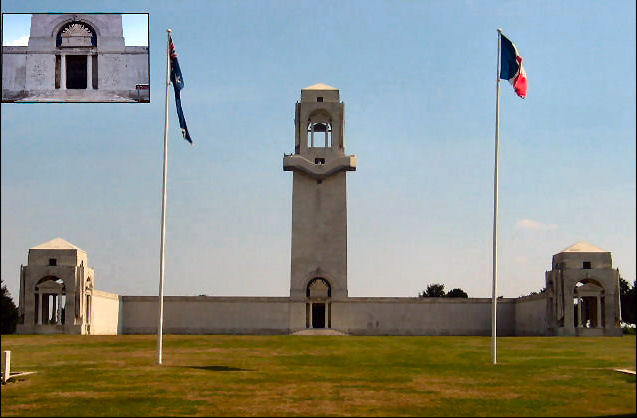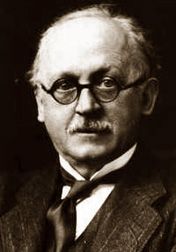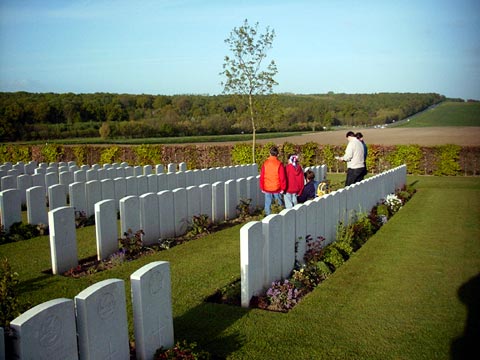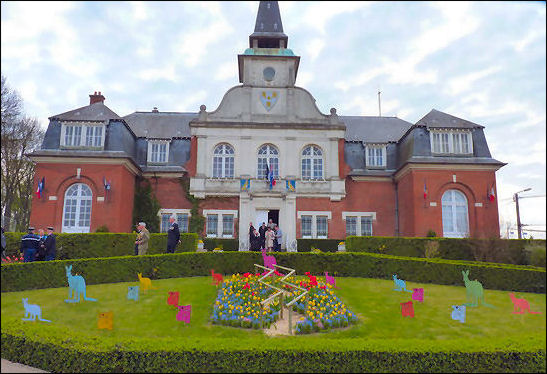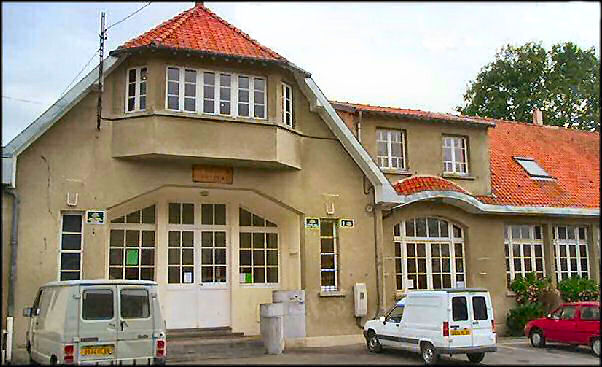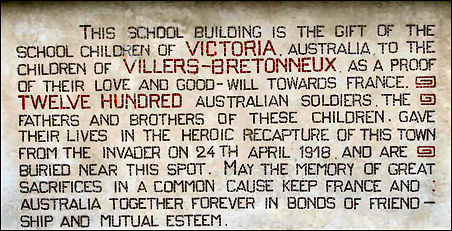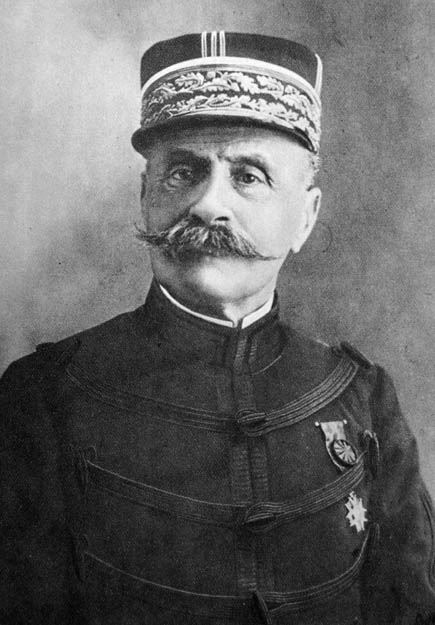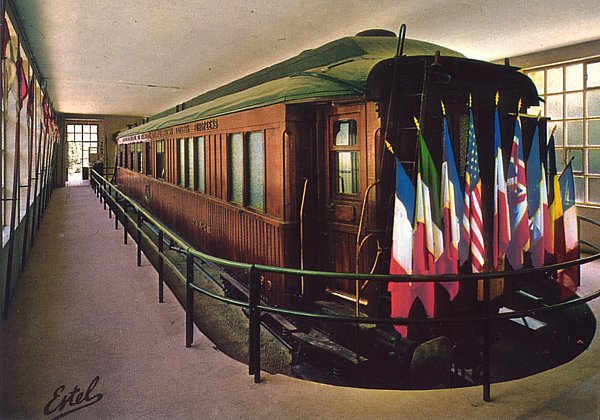|
|
|
|
Radschool Association Magazine - Vol 39 Page 7 |
|
|
Privacy Policy | Editorial Policy | Profit Policy | Join the Association | List of Members | Contact us | Index | Links |
|
|
My Story! |
|
|
Back Go to page: 1 2 3 4 5 6 7 8 9 10 11 12 13 14 15 16 17 18 19 20 Forward |
|
|
|
|
|
Group Captain Frank Howie (Retd)
I enlisted in the RAAF as a Trainee Signaller on 1 October 1951. As a 19 year old my motivation for enlisting was very common to most people who joined the armed forces at that time, i.e. to participate in some adventure - to serve in Korea.
Signaller Training consisted of three phases:- Initial Aircrew training at 1 FTS Point Cook; Signaller training at Air Ground Radio School (A&GRS) at Ballarat; and Air Gunnery training at Air Armament School East Sale.
The first stage lasted 12 weeks and consisted of such subjects as Aerodynamics, Aero Engines, Armament, Navigation, Morse and Drill.
The second phase started on 7 January 1952 and continued for 40 weeks. This phase could best be described as a mixture of the WOM (Wireless Operator Mechanic) course and the Telegraphist course.
No 4 Signaller Course at Ballarat, in summer uniform.
|
|
|
|
|
|
|
|
|
The main difference between phase 1 and phase 2 was the addition of airborne exercises which totalled 83 flying hours and these were conducted in a specially outfitted Dakota.
When I think back of our time at Ballarat, the first thing that always comes to mind is the weekly combined CO’s Church Parade. After the flights had lined up the first order given by the WOD was, "fall out all the Roman Catholics, Jews and unbelievers.” Those people would go to the rear of the parade and were then marched off to undertake fatigue duties like splitting mallee roots (no easy job). I couldn't imagine such an order being given on a parade today. However, I did notice, that as time passed there was a notable increase in the number of people falling out. Members obviously thought it would be better to do fatigue duties rather than stand around on a freezing parade ground. As a matter of interest I had the job of being a drummer at the parades.
Talking
of cold weather, people who know
Ballarat
are aware that it can be very hot in the
Another highlight of our time at A&GRS was a survival training exercise. On a Monday morning our course was transported to the foot of the You Yang Mountains which are about 80 kms from Ballarat and about 25 kms north-east of Geelong. The aim of the exercise was to return to Ballarat by foot, living off the land and evading contact with other humans especially local police who had been co-opted to try and detain us. We were dressed in normal working dress and the only item we were allowed to take was a 0.22 rifle and ammunition. The photo below shows our course ready to move out and shows Jim Treadwell (2nd from left rear) and myself in the middle of the front row.
Jim was
elected to be the rifle man and it is almost prophetic that in the photo
he appears
Another group were not so fortunate. They had been dropped off south of the Lerderderg Gorge which is just north of Baccus March. Early in the exercise the group shot a wild goat which they skun and butchered and cooked on an open fire. Unfortunately the meat proved to be unsuitable for human consumption and they all suffered severe gastric problems. They were too sick to continue so they holed up in a cave on the side of the gorge. When the group had not returned by the following weekend search parties were sent out to find them. They were eventually found and repatriated back to Ballarat. Fortunately after medical attention they all recovered from their sickness.
Many other memories come flooding back as I write this, for example armed guard duty at the hangar which housed wartime aircraft, kitchen fatigue duties, our free Wednesday nights which we were allowed to spend in Ballarat city and finally the camaraderie which developed among the members of the course.
The third phase started on 13 October 1952 and lasted 8 weeks. The course covered all aspects (theory and practical) of air Gunnery. The photo below shows me about to embark on a gunnery exercise in a Lincoln aircraft.
|
|
|
After our tour with No 11 Squadron, Jim and my careers took different directions. In 1955 Jim was selected for pilot training and in 1957 I transferred to the Engineering Branch.
In 1958 I attended a 12 months Specialist Armament Course the first six months of which comprised of a special electronics course back at A&GRS. Although the unit had not really changed since 1952 I have to admit that living in the Officer's Mess was a lot more comfortable than living in the tin huts. In the 1970's Jim and my paths crossed again at Williamtown where Jim served as CO of 76 SQN and later as CO of 77 SQN.
My final appointment was CO 481 SQN and I left the RAAF on 5 April 1979.
|
|
|
The Taco Bell Chihuahua, a Doberman and a Bulldog are in a doggie bar having a drink when a good-looking female Collie comes up to them and says, "Whoever can say liver and cheese in a sentence can have me." So the Doberman says, "I love liver and cheese." The Collie says, "That's not good enough." The Bulldog says, "I hate liver and cheese." She says, "That's not creative." Finally, with his Mexican accent, the Chihuahua says, "Liver alone......cheese mine."
|
|
|
ANZAC Traditions
The following is a copy of a speech made by Frank Howie to a group of people at the Stroud RSL (just west of Bulahdelah) on ANZAC Eve 24 April 2009
There are two simple phrases on which our Anzac tradition is based –
· “We will remember them” and · “Lest we forget”.
Over
the years I have attended many different Anzac Day ceremonies and
functions. Tonight I intend to speak about a certain Anzac Day which has
left a deep and lasting impression on me. I need to take you back to the
year 1961. In January of that year I was a member of an eight man RAAF
team that was posted to France for a period of about six months. The
purpose of the team was to write the engineering specification for the
Mirage aircraft which we were buying from the French. I suppose the idea
of being in France and especially Paris for 6 months sounds romantic.
Alas, this was not so. Unfortunately we arrived in France at the height
of the
Algerian crisis.
The Algerians were waging a bitter
Demonstrations and riots were occurring on a regular basis on the streets of Paris and terrorist bombs were being detonated across the city. On one occasion we even witnessed a running gun battle outside the hotel where we were billeted. You had to be careful when you dined out because restaurants were a prime target for the terrorist bombings. During our stay two of our team had to fly to England. As they were about to enter the main terminal at Orly airport a large explosion occurred inside the terminal which blew out windows and doors. Fortunately our two mates were not injured but needless to say they did not get to England that day.
Despite the problems caused by the civil unrest we were able to meet our commitments with minimum disruption. This was largely due to our French driver who was with us during our stay in France. His name was Pierre and would have been in his early sixties. As a young man he had fought alongside the Australians in the 1st World War. Whenever the subject of that war was raised his comment about the Australian soldiers was always the same - “Trés Manifique”. He was a street wise Parisian who was able to predict possible trouble on the streets and was always able to navigate around potential trouble spots.
As we approached 25th April, our French hosts advised us that they wished to take us on a tour on Anzac Day. On that day we travelled about 100 Kms north of Paris which took us to the area on the Somme in the vicinity of the city of Amiens. The area of the Somme saw some of the bloodiest fighting of the 1st World War and it is and area closely associated with the actions of the Australian forces. As we travelled in this area the reminders of the war could plainly be seen. The countryside still bore the scars of the many trench systems that had been constructed in the area. War cemeteries and memorials dotted the landscape and they bore testimony to the dreadful carnage that had occurred in the Somme. |
|
|
One
battlefield of special interest was situated outside the town of Albert
which is 25 Kms north-east of Amiens. The battlefield occupies an area
of about 10 acres and has been preserved just as it was at the end of
the war. The trenches are still there and these contained all the
paraphernalia one would expect. The only things that had been removed
were the ammunition and explosives. No mans’ land was pock-marked with
shell holes and littered with remains of barbed wire entanglements. It
was here in July 1916 that a Newfoundland Battalion made a gallant
charge against a well entrenched enemy. Of the roughly 1000 men who made
the charge, 800 were killed. It was not until November 1916 that the
area was retaken by the allies and the bodies of the Newfoundlers could
be
We then proceeded south to the township of Villers-Bretonneux (pronounced Via Bitteno) which is situated 15 Kms east of Amiens. Although I was aware that this township had been associated with the Australians during the war, I was not really prepared for the events which were about to take place. To get a better understanding of our visit to Villers-Bretonneux, I need to briefly outline the situation which existed on the Western Front in late 1917 and early 1918.
During the period from 1914 to 1917 the allies and the Germans had sustained horrific casualties. As a result, towards the end of 1917 the front lines were fairly well established without any major changes in their alignment. Two major events that occurred towards the end on 1917 had a dramatic effect on the prosecution of the war. Firstly, in November 1917 the Bolsheviks seized power in Russia and Lenin immediately announced an armistice with Germany. This meant that Germany could re-deploy up to 50 divisions from the Eastern Front to the Western Front. Secondly, in 1917 America declared war on Germany after the continued sinking of American ships by German submarines. It was recognised, however, that America would not be able to make a significant contribution to the war until about mid-1918.
As a
matter of interest, it was also in November 1917 that the two Anzac
Corps were disbanded and the five Australian divisions were grouped
together to form the Australian Army Corps. The New Zealand division was
not included in the new Corps but it would continue to fight alongside
the Australians. Hence-forth the Australians would operate as an
The Germans knew it was a matter of arithmetic and they had to make a choice. They would have to act before mid-1918 to have any chance of winning the war when the numbers were on their side. After that, they would be outnumbered and ultimate defeat would be inevitable. The Germans decided to go for broke. They developed a strategy which would involve a massive attack on a 50 mile front. It would be aimed at breaking through the allied lines and driving on to the sea. This would not only split the allied armies in half but it would also leave the northern channel ports vulnerable to attack. These ports were the same source of supplies for the allied forces. If successful the attack would also leave Paris vulnerable to attack especially from long range artillery.
|
|
|
|
|
|
The Germans launched their massive offensive on 21st March 1918. The attack began with a barrage from 6600 guns - The heaviest in history. On the southern front the attack was launched from the Ardennes region similar to that in World War 2 which became known as the Battle of the Bulge. Three of the five Australian divisions were immediately deployed and took up a defensive line extending from Albert in the North to Villers-Bretonneux in the South, about 20 Kms.
The German assault rolled on westward and by 4th April they had captured 1000 square miles of territory and taken about 75,000 British prisoners. By this time the main focus of the German attack was towards the major city of Amiens. Villers-Bretonneux had now become the most important town of the war. It offered the best approach to Amiens which was the city critical to the outcome of the war. |
|
|
The Germans continued their advance and by the third week in April they had advanced to within 2 Kms of Villers-Bretonneux. This township was mainly defended by the British 8th Division. This division had recently lost nearly 5000 men or half its strength. The division was now manned large number of green 18 year old conscripts who had virtually no battle experience. At dawn of the 24th April the Germans began shelling Villers-Bretonneux and this included mustard gas shells. The German assault was spear headed by tanks and this caused panic amongst the inexperienced defenders. Very soon the defence line broke and Villers-Bretonneux fell early in the day of 24 April. The only thing standing between the Germans and Amiens was one Australian Brigade situated north of the town and another Australian brigade which had just marched 8 miles to take up a position south-west of the town.
The
Australian Headquarters decided that the two brigades would mount an
immediate counter attack but this would give no time for elaborate
planning or reconnaissance. The counter attack began at 10PM on 24 April
with the Northern brigade mounting an enveloping attack to the north of
the town. At the same time the second brigade mounted a similar attack
to the south or the town. Bloody hand to hand fighting was waged
throughout the
You can see a very interesting report done by the Australian Newspaper HERE and a video of the events, also prepared by the Australian, HERE.
With that background I would now like to move on to our visit to Villers-Bretonneux. Our first stop was to visit the Australian National Memorial which stands high on a hill to the north of the township. This memorial is dedicated to 11,000 Australians who were killed on the Western Front and have no known grave. From its tower you can just make out the spire of the Amiens cathedral. |
|
|
|
|
|
Australian National Memorial, Villers-Bretonneux.
|
|
|
|
|
|
|
|
|
The Villers-Bretonneux Memorial is the Australian National Memorial erected to commemorate all Australian soldiers who fought in France and Belgium during the First World War, to their dead, and especially to those of the dead whose graves are not known.
From
this memorial we moved on to the Australian War Cemetery on the
outskirts of Villers-Bretonneux. This cemetery contains the graves of
1200 Australians who died in the fighting on 24/25 April. We were met at
the cemetery by a group of townspeople including
There are now 955 Commonwealth servicemen of the First World War buried or commemorated in this cemetery. 261 of the burials are unidentified but there are special memorials to 4 casualties known, or believed to be buried among them. The cemetery was designed by Sir Edwin Lutyens.
On 2 November 1993, following a request by the government of Australia, an unknown Australian soldier killed in the First World War was exhumed from Plot III, Row M, Grave 13, and is now buried in the Australian War Memorial in Canberra.
From the cemetery we moved into the town to what we would call the town hall (the French expression is “Le mairie”).
There we were greeted by the town mayor and a large gathering of the town people and were invited to participate in the ceremony known as the “Vin D’Honneur” or the wine honour. As we entered the building the first thing to catch our attention was a permanent plaque with the inscription “Nous n’oublierons jamais les Australiens”. The literal translation of this phrase is “We will never forget the Australians”. Another version could quite easily have been “We will remember the Australians” or “Lest we forget the Australians”. The sentiment of the French inscription is exactly the same as our Ode to Remembrance. The Vin D’Honneur” was a very simple ceremony which involved a toast to Australia and Australians using the same words as those on the plaque. This simple ceremony is repeated every Anzac Day.
Villers-Bretonneux Town Hall
After the ceremony at the town hall we visited the local school. This stands on the Rue De Victoria which runs into to Rue De Melbourne. We were once again met by the school children and their teachers. They greeted us with a rousing rendition of “ Waltzing Matilda”. Every class room in the school carries above its black board the inscription “Nous n’oublierons jamais les Australiens”. The school has a fine museum and this contains large amounts of Australiana. |
|
|
We learnt that after the war the township of Villers-Bretonneux was adopted by the city of Melbourne and the Victorian Government. The main reason for this was that one of the Brigades associated with the fighting in Villers-Bretonneux consisted of Victorian battalions. Melbourne and Victoria paid for the re-building of the school and also contributed to helping re-build the town.
Victoria school
The
plaque on the wall of the School commemorates the fact that the school
was rebuilt with the aid of funding from the Victorian State and money
donated by school children from the State.
The Monument in the parking area at the front of the school traces the rebuilding of the school from the original visit in 1921 through the laying of the foundation stone and on to the inauguration of the new school on ANZAC Day in 1927.
The Museum is housed in the roof of the school. It is open Saturday afternoons or on simple demand at the Mairie (Town Hall). There is a small entrance charge, but during ANZAC Week it is free. You can obtain quite a lot of information here about other areas of interest in the Somme. There is a small screening room at the far end of the museum where you can watch a video presentation.
At a special ceremony in 1993 an Australian Soldier was removed from Adelaide Cemetery and returned home to lie in Canberra. The flag and hat which had been used on the coffin are now on display in the museum.
A model of the original monument at Mont St Quentin erected in 1925 which was destroyed by the Germans during the Second World War. They didn't like the depiction of an Australian bayoneting the German Eagle. The replacement monument is rather less dramatic and was raised in 1971.
The esteem and affection with which Australians are held by the people of Villers-Bretonneux is obvious. But what of the wider French population? This is best answered by a ceremony that took place in Amiens on 7th November 1930. On that day a body of an unknown Australian soldier together with the body of an unknown French soldier were interred in the cathedral at Amiens. At that ceremony the Bishop of Amiens said:
“We bow to you Messieurs les Australiens for the magnificent deed you
did. In the whole history we cannot find an army more marvellous in its
bravery and in
At the same ceremony, Marshall Foch who had commanded the French said:
“The passionate valour of the Australians served as an example to the world. That attack of yours at Villers-Bretonneux was final proof, if any were needed, that the real task of the high command was to show itself equal to its soldiers. You saved Amiens, you saved France. Our gratitude will remain ever and always to Australia.”
After this memorable visit to the Somme and especially Villers-Bretonneux we headed back to Paris. However, on the way we made one more visit. We stopped at the small town of Compiégne which is situated about 45 Kms north of Paris. There, in a small clearing in a forest, stands a single railway carriage that the armistice was signed at 5AM on 11th November 1918. It is of interest to note that Hilter insisted that the instruments of French surrender in 1940 be signed in the same carriage.
There is no doubt that the Anzac Day of 1961 has left a deep and lasting impression on me. I consider myself both lucky and privileged to have been able to make that once in a life time pilgrimage. Over the years I have thought deeply about our Anzac tradition and I think we sometimes underplay the role of the Anzacs on the Western Front. Perhaps this is about to change. Recently I read that the government expects up to 12,000 Australians will make this years’ pilgrimage to Gallipoli. At the same time advertisements started to appear in the newspapers.
Finally gentlemen, as you attend your Anzac Day services next week, I can assure you that in the French township of Villers-Bretonneux the townspeople will also be conducting their own service, first at the Australian War Cemetery and then at the town hall. As they take the cup of honour the toast will be “Nous n’oublierons jamais les Australiens”. |
|
|
|
|
|
Three dead bodies turn up at the mortuary, all with very big smiles on their faces. The coroner calls the police to tell them what has happened. The Coroner tells the Inspector: 'First body: An Italian , 60, died of heart failure while with his mistress. Hence the enormous smile.' 'Second body: 'Scotsman, 25, won a thousand pounds on the Lottery, spent it all on whisky, died of alcohol poisoning, hence the Smile.' The Inspector asked, 'What of the third body?' 'Ah,' says the coroner, 'This is the most unusual one. Danny O'Neil, Irish, 30, struck by lightning.' 'Why is he smiling then?' inquires the Inspector. 'Thought he was having his picture taken'. |
|
|
|
|
|
|
|
|

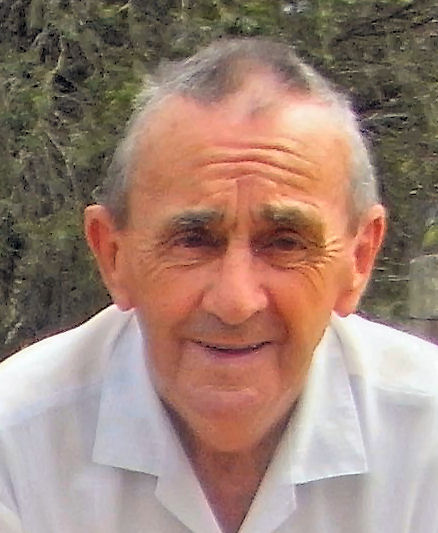
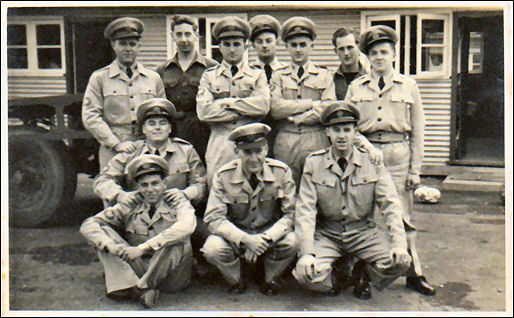
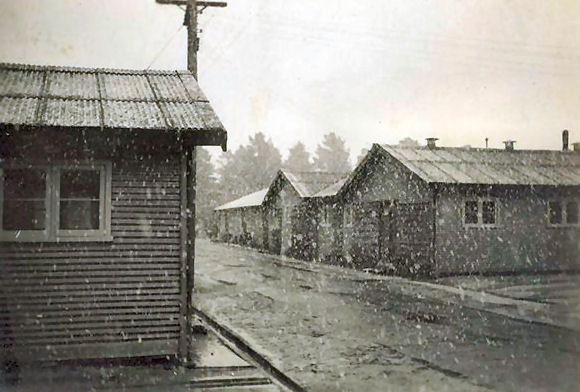 summer and extremely freezing
cold in the winter. We were housed in unlined tin huts which offered no
protection from the freezing cold. At night we would pile the top of our
beds with floor mats and spare clothing. This helped but did not fully
solve the problem of staying warm.
summer and extremely freezing
cold in the winter. We were housed in unlined tin huts which offered no
protection from the freezing cold. At night we would pile the top of our
beds with floor mats and spare clothing. This helped but did not fully
solve the problem of staying warm.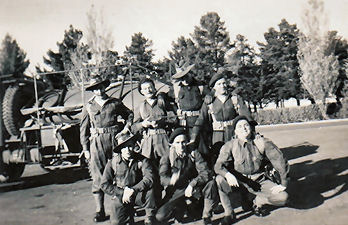 to be aiming at my head. At one stage during the exercise we had to
clamber up the sides of a very steep gully. Jim reached the top first
and when I was a few meters from the top a shot rang out. As I scrambled
over the top I was confronted at eye level by a still wriggling death
adder snake which, alive, could have caused me a bit of grief.
Fortunately, Jim was a pretty good shot. We arrived back at Ballarat on
the Friday evening tired and hungry, but none the worse for wear.
to be aiming at my head. At one stage during the exercise we had to
clamber up the sides of a very steep gully. Jim reached the top first
and when I was a few meters from the top a shot rang out. As I scrambled
over the top I was confronted at eye level by a still wriggling death
adder snake which, alive, could have caused me a bit of grief.
Fortunately, Jim was a pretty good shot. We arrived back at Ballarat on
the Friday evening tired and hungry, but none the worse for wear.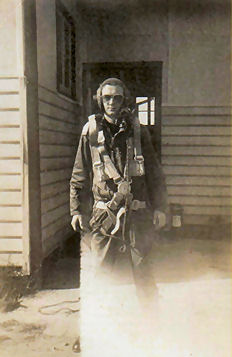 We
graduated at East Sale in January 1953 with the rank of Sergeant. Jim
Treadwell (a good friend) and I were posted to No 11 Squadron (Neptunes)
which were based at Pearce back then and we travelled across to Perth in
his little Singer Tourer. That trip is another story in itself since the
road across the Nullarbor was unsealed and at times could best be
described as a goat track frequently undermined by wombats.
We
graduated at East Sale in January 1953 with the rank of Sergeant. Jim
Treadwell (a good friend) and I were posted to No 11 Squadron (Neptunes)
which were based at Pearce back then and we travelled across to Perth in
his little Singer Tourer. That trip is another story in itself since the
road across the Nullarbor was unsealed and at times could best be
described as a goat track frequently undermined by wombats.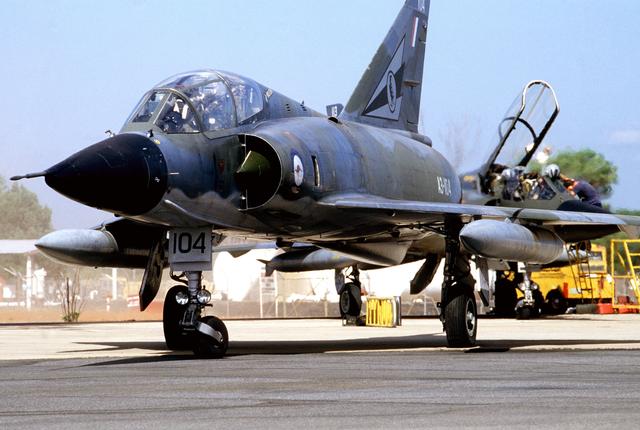 terrorist and guerrilla campaign aimed at gaining independence from
France. The campaign was being not only waged in Algeria but also in
France especially on the streets of Paris.
terrorist and guerrilla campaign aimed at gaining independence from
France. The campaign was being not only waged in Algeria but also in
France especially on the streets of Paris. 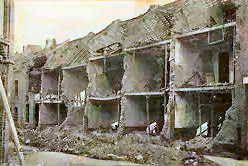
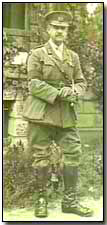
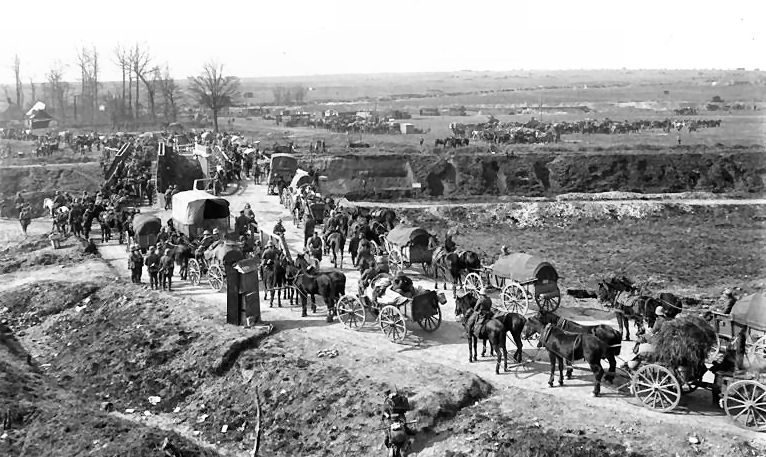
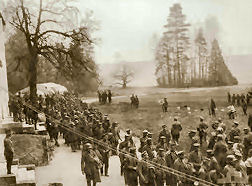 night of 24/25 April and at dawn elements of the two brigades started
clearing the town of Germans. By mid-day of the 25th April the two
brigades linked up to the east of Villers-Bretonneux and a defensive
line was established about 2 Kms east of the town. The town of
Villers-Bretonneux and the city of Amiens were never again threatened.
Indeed, the successful Australian counter attack spelled the beginning
of the end for Germany. From the end of April until the end of the war
the Germans would retreat all the way back to the Hindenburg Line and
beyond. Two Victoria Crosses were won at Villers-Bretonneux. The
Australian campaign at Villers-Bretonneux has been rated by military
strategists as perhaps the greatest individual feat of the war. The
successful counter attack was carried out at night, across unknown and
difficult ground, and at a moment’s notice.
night of 24/25 April and at dawn elements of the two brigades started
clearing the town of Germans. By mid-day of the 25th April the two
brigades linked up to the east of Villers-Bretonneux and a defensive
line was established about 2 Kms east of the town. The town of
Villers-Bretonneux and the city of Amiens were never again threatened.
Indeed, the successful Australian counter attack spelled the beginning
of the end for Germany. From the end of April until the end of the war
the Germans would retreat all the way back to the Hindenburg Line and
beyond. Two Victoria Crosses were won at Villers-Bretonneux. The
Australian campaign at Villers-Bretonneux has been rated by military
strategists as perhaps the greatest individual feat of the war. The
successful counter attack was carried out at night, across unknown and
difficult ground, and at a moment’s notice.